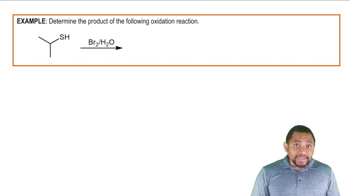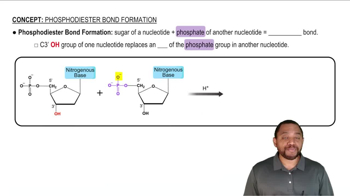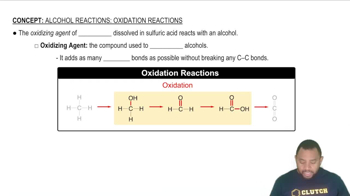Multiple Choice
Draw skeletal structural formula for 2-ethylcyclopentanethiol.
 Verified step by step guidance
Verified step by step guidance Verified video answer for a similar problem:
Verified video answer for a similar problem:



 :36m
:36mMaster Rules for Naming Thiols Concept 1 with a bite sized video explanation from Jules
Start learning